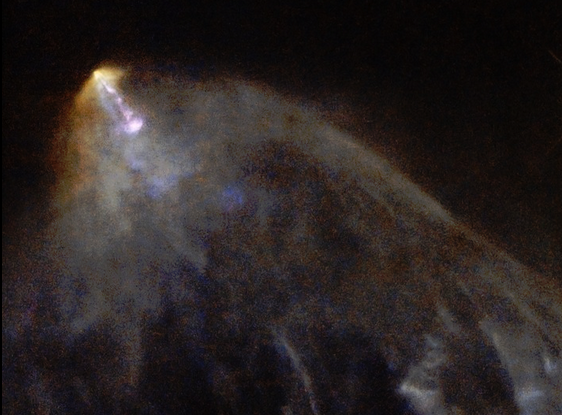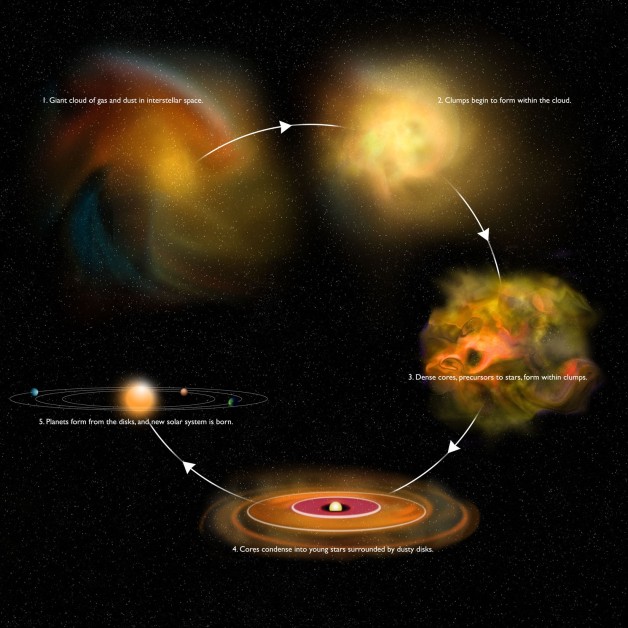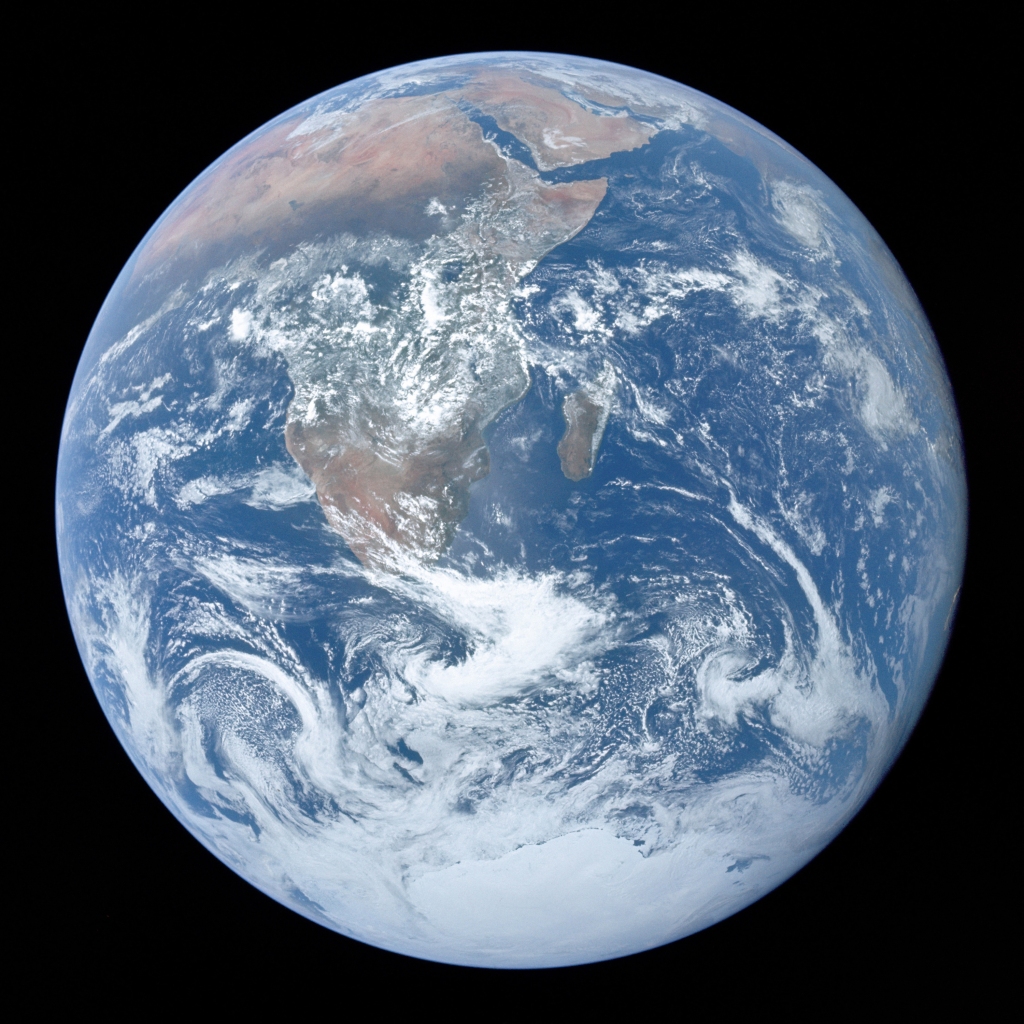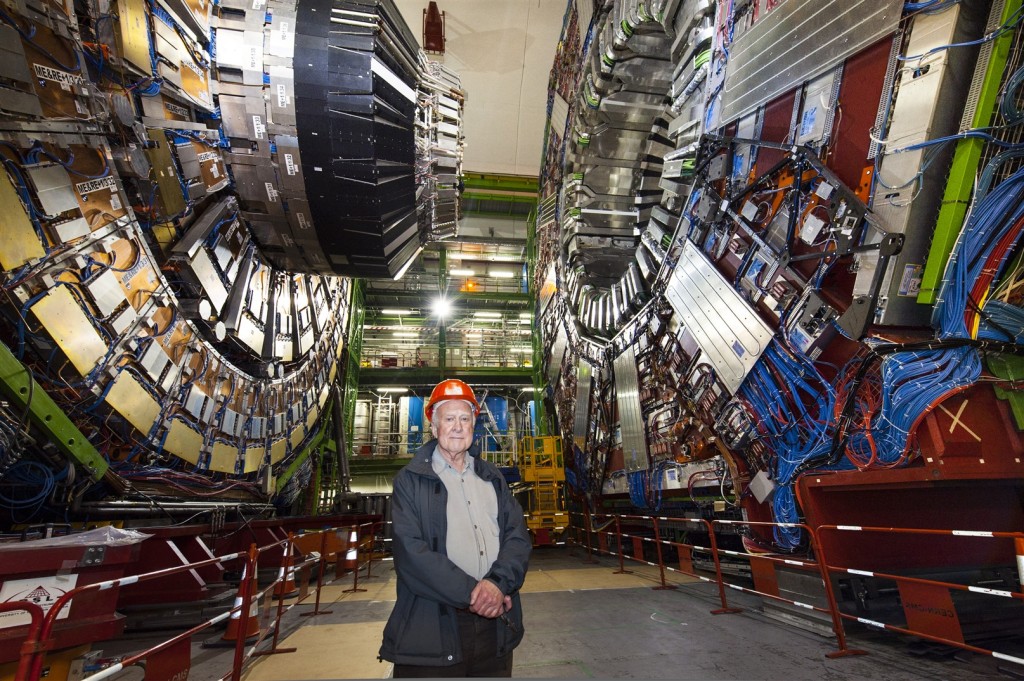What appears to be a solar system in the process of formation has been imaged by the newly commissioned Atacama Large Millimeter/submillimeter Array (ALMA) telescope (see Fig. 1).1 The ALMA telescope, located 5,000 meters up in the Andes of northern Chile, on the Chajnantor plateau in the Atacama Desert, consists of 66 mobile radio-astronomy dishes, which can be spaced up to 16 kilometers (10 miles) apart. This effectively combines their power into one 16-km-wide telescope which results in detailed images never before achieved. The telescope’s submillimeter wavelength resolution allows it to see through the clouds of dust that obscure it from sight in visible light images. Future improvements to the facility are expected to more than double its resolution.

This leaves us asking questions. Have planets been imaged while forming around young stars? Have protoplanetary systems—as they are called—actually been observed while the formation process is happening? If so, how do they fit into the biblical creationist worldview? According to the latter God created the stars on Day 4 of Creation Week about 6000 years ago (as measured by Earth’s clocks).
From a biblical creationist perspective then, the issue of both star and planet formation is not so much that we are seeing the process via our telescopes today, but whether the process is occurring naturalistically,2 without the creative hand of God.
However, the stunning significance of the ALMA image (Fig. 1) is that it almost exactly matches what secular astrophysicists had long predicted a solar system should look like during the early stages of its formation. An article in Sky & Telescope, November 6th, 2014, reported,
“An ALMA submillimeter-wavelength image unveils the dawn of planet formation around a surprisingly young star in unprecedented detail.”1 (emphasis added)
One important element missing from this image (Fig.1) is the planets themselves, or at least the planetesimals,3 which are allegedly their precursors. Another important missing element is the cloud of gas and dust that allegedly surrounds it all and obscures it from view in visible light. The ALMA telescope is able to see through this dust to obtain the image. But a much wider view, taken in the visible part of the spectrum, with the Hubble telescope, shows what it looks like (Fig. 2).

So what is it exactly that we are looking at in Fig. 1? Is it really a new-born star and proto-planetary system caught on-camera in the process of formation? Does this evidence support the evolutionary worldview by demonstrating beyond doubt that stars and planets can form via naturalistic processes? Or are there other explanations?
As biblical creationists, we are really left with just two questions:
- What can we learn from planetary systems?
- What story-telling is told to support the evolutionary worldview?
We need to be cautious about anything at all that we might say about this new image. Science makes progress only by studying repeatable events, making comparisons between them, developing generalizations (hypotheses) about them, and using those hypotheses to predict the expected outcomes of new observations.
The study of origins in secular astronomy is fundamentally uniformitarian in nature.5 Astrophysicists are limited to what they can find to test their hypotheses. What they do is like ‘stamp collecting’—if you find a lot the same you say it is common, if you don’t you say it is rare. And because they are largely locked into the evolutionary big bang paradigm, they are looking for systems at different evolutionary stages. That is very much analogous to the fossil record and ‘seeing’ the supposed evolutionary stages therein. The investigators’ bias heavily influences their interpretation of the evidence at hand.
Because Fig. 1 is the first-of-a-kind image it would be prudent to wait until more similar objects are detected before making any generalizations anyway. To illustrate the problem, the biggest obstacle to anyone developing useful hypotheses about universes is that we only have one of them (the so-called ‘cosmic variance’ problem). In contrast, there are lots of galaxies, stars, and planets that we can study, but this is the first time that we have seen what looks like a newly-forming solar system.
To properly interpret Fig. 1, however, we need to understand the theory behind planetary disk formation.
The Sky & Telescope (2014) report stated that,1
“The smallest gaps in the protoplanetary disk occur around 20 to 30 a.u. and near 70 a.u. Although no planets are detected at these wavelengths, the gaps are most likely the markers of a planet’s passage through the disk.” (emphasis added)
The discovery of disk gaps around a star supposedly less than one million years old is surprising—planets aren’t supposed to form so fast under naturalistic uniformitarian processes. No, they are meant to take up to 100 million years to form.
Astronomers expect from the standard theory of formation of planetary systems (from a solar type nebula of gas and dust, see Fig. 3) that after the star turns on in the centre (which is impossible, naturalistically2) the radiation from that star clears out lanes of dust where the planetesimals are forming. These are what they hope has occurred here in the dark rings around the central star in the image of Fig. 1.
Story-telling

Of course this is story-telling based on the hoped-for course of events that they believe happens/happened, because there is no Creator in their universe. The sequence of events is illustrated in Fig. 3. But in the case of HL Tauri it is acknowledged that even this seems to be surprising, that the star, by their uniformitarian assumptions, is only a million years old, and planets are not supposed to form that fast.
Did they observe planets or proto-planets in those disk gaps? Well, no. But even if they did, or will do in the future with improved technology, it still does not mean the theory of planetary formation, the core-accretion model, is necessarily correct.
A recent attempt to simulate planetary formation6,7 started with key assumptions of sufficiently high cloud density and a supernova shock wave arriving at just the right angle, which simulated the formation of spinning planets. But the cloud had to already have a significant rotation, which leads to the well-known serious problem with the conversation of angular momentum.
Consider our sun with a mass representing 99.86% of the mass of the solar system but only 1% of its angular momentum. The planets on the other hand have a total combined mass of only 0.14% of the mass of the solar system yet 99% of its angular momentum. Most of the angular momentum of any solar system must reside initially in the central core of the collapsing cloud, which eventually becomes the star, according to the theory. Yet after some time nearly all the angular momentum is transferred to the planets. This is a huge problem for the theory.
From a biblical perspective, one thing that we can learn from an image like this is that it can give us clues into the early formation of our solar system.8 But not naturalistically, without the Creator. Rather it can give us some idea about the materials that God used and whether or not our solar system is unique.9 I don’t believe it is unique in the sense of being the only one to have planets, of course. Many extra-solar planets have already been discovered in the Galaxy. One was recently named Earth 2.0.10
I expect astronomers will find a whole gaggle of planetary systems in different states of ‘formation.’ This does not mean they are currently forming like this now. Though it is often stated that stars are currently forming in the Universe. Therefore it follows from big bang cosmology type thinking that as one looks out into the cosmos one should see them at different stages of formation.
There are yet many problems to solve with solar system formation. To get the star to form in the centre of the solar system, physics has to be overcome–the physics of magnetic fields and gas pressure that tend to act against the collapse of the cloud. More often than not, as stated above, the necessary density of a collapsing cloud, or near critical density, is assumed in any simulations on the formation of planetary systems. To form the star either you need a supernova nearby, or a Creator, who can overcome His own laws.2 A supernova is due to known physics, an explosion, which, in theory, is able to supersonically compress a cloud of gas beyond the limitation where gravity can take over, which otherwise cannot happen naturalistically.11 Of course, a supernova requires a star to exist already, so it cannot be used to explain the formation of stars in the first place. Otherwise you would have to ‘believe’ in the existence of some unobservable ‘dark matter’ in the centres of solar nebulae that allowed the stars to condense, overcoming the natural limits placed on the nebular clouds by the physics.2
Acknowledgement
I would like to thank Alex Williams for all his very useful suggestions.
References
- Young, M., ALMA Image Reveals Planetary Genesis, 6 November 2014.
- Hartnett, J.G., Stars just don’t form naturally—‘dark matter’ the ‘god of the gaps’ is needed, 1 September 2015.
- Planetesimals are objects formed from dust, rock, and other materials thought to exist in protoplanetary disks. Planetesimals sizes can range from several meters to hundreds of kilometres.
- A glowing jet from a young star, 15 September 2015.
- Hartnett, J.G., Why is Dark Matter everywhere in the cosmos? 31 March 2015.
- Boss, A. P., and S. A. Keiser, Triggering Collapse of the Presolar Dense Cloud Core and Injecting Short-Lived Radioisotopes with a Shock Wave. IV. Effects of Rotational Axis Orientation. The Astrophysical Journal. 809(1): 103, 2015.
- Thomas, B., Protoplanetary Disc Model Falls Flat, icr.org, September 17, 2015.
- Hartnett, J.G., The ‘waters above’, Journal of Creation 20(1): 93–98, April 2006.
- Because we are too close to ‘see’ our solar system overall, it may be easier to understand the structure of what it looks like and might have looked like during its creation by God by imaging these planetary nebulae.
- Hartnett, J.G., Life on Earth 2.0—Really? 13 August 2015.
- Sarfati, J.D., Solar system origin: Nebular hypothesis, Creation 32(3): 34–35, July 2010.






17 responses to “A ‘protoplanetary system’ in formation?”
But I thought that according to Russell Humphreys, God made the planets out of water. Also, if God made the planets on day 4 of Creation Week by Earth clocks, we shouldn’t see them forming now. Then there’s also the same problem with the quasars being ejected from the galaxies, which you say is God creating. So this kind of doesn’t fit the ASC creation model. So what about creationist cosmologies based on time dilatation like yours and Humphreys? How does this discovery and Arp’s discoveries of quasar-galaxy association, which are allegedly God creating matter, fit into them?
Regards!
LikeLike
From Genesis chapter 1 it is pretty clear that God created the Earth by initially starting with a ball of water. Read 6-DAY CREATION OF THE UNIVERSE. Russ Humphreys’ model began with that concept. Of course, God had to create rocky material to make foundation rocks on the Earth and inner planets. We read that on Day 3 God created at least one continent on Earth. Whether or not we can see extra-solar planets forming now depends on the details of the creationist cosmology you adopt. Time dilation cosmologies have the idea that we are seeing back into Day 4 events in the cosmos. In the case of ejection of quasars from parent galaxies, you would have argue that those processes have all occurred with 6000 years or so of Creation to fit into the ASC model. In fact, that is the main test of that model. Are there any cosmic processes that must have more than 6000 years of time (in their own frame of reference)? See THE ANISOTROPIC SYNCHRONY CONVENTION MODEL AS A SOLUTION TO THE CREATIONIST STARLIGHT-TRAVEL-TIME PROBLEM — PART I and THE ANISOTROPIC SYNCHRONY CONVENTION MODEL AS A SOLUTION TO THE CREATIONIST STARLIGHT-TRAVEL-TIME PROBLEM — PART II. See also SUPERNOVA REMNANTS AND THE AGE OF THE UNIVERSE.
LikeLike
The fact that creationists put words in italics or quote marks to express scepticism proves that they are pushing one-sided propaganda.
LikeLike
And you people query science simply because it does not tally with a literal reading of Genesis, not because it assumes and operates based upon naturalism and known observed processes and phenomena (since clearly if the Christian god exists he does NOT only do things ‘supernaturally’). (The big bang is not biblical – but it is not inherently atheistic either. But you still object.)
LikeLike
If by a ‘literal reading’ you mean a grammatically correct historical narrative then, yes, I agree, YECs promote the authority of Scripture over man’s so-called ‘scientific’ interpretations of unobserved past events. This is not science against the Bible though. Just that biblical creationist understand the weight one can put on historical science. But, Ashley, you have heard this many times. Also I personally do not like it when ‘unknowns’ are invoked to explain the unknown. That is not good science, in my opinion. Of course God does stuff naturally, after all the laws of Nature are His own creation. But I disagree with you when you say the big bang is not inherently atheistic. It is inherently a story promoted in an effort to remove the Creator from His own Creation. If I was to yield anything on this it would be to say that it is pagan, that the creation/the universe is now the god of the big bang believer. So if that is not atheistic, then I will give you your point.
LikeLike
Putting words in italics has “nothing” to do with pushing a one-sided agenda as if that is such a bad thing. But I admit I do push a one-sided agenda, that all interpretations on origins must conform to a grammatical historical interpretation of the scriptures. Non-YECs, atheists, anyone also have a one-sided agenda, whether it be the big bang origin of the Universe, or Darwinian evolution. Everyone involved in origins research is biased; just that each has his own bias. We are inherently all “religious”, one way or another. You are also, though you may deny it, but we all have a worldview and that determines how we interpret any evidence.
LikeLike
Creation science is inflexible over origins. Science is not inflexible in the same way.
LikeLike
Ashley, that is not so. Firstly Creation science is science as much as big bang science or evolutionary science is science. You may be right though, that non-creation science is inflexible in a different way. I think I would agree with you. Each has its own premise. In my university Darwinian evolution is treated as a fact, yet there is an enormous consensus on of secular non-YEC scientists who doubt that. Yet if a student questioned the ruling paradigm in almost any university in the West he would fail that subject. Talk about inflexibility.
LikeLike
Why have you censored my first reply?
And what young earth creationists oppose IS the scientific consensus on origins – calling it ‘historical’ does not make it ‘not’ science.
LikeLike
You asked why have I censored your first reply. I didn’t. I just hadn’t gotten around to replying, which I have now done.
Yes, YEC do oppose the so-called “scientific” consensus on origins. The argument is usually that it is “scientific” when there is no Creator involve, only that the Universe made itself 13.8 billion years ago or life arose spontaneously from lifeless chemicals in some pool on the side of a volcano 3.8 billion years ago, . It is called religious, not scientific, when we suggest the Creator is responsible for the origin of the Universe and all life in it. But I agree “calling it ‘historical’ does not make it ‘not’ science,” but it is not science in the sense of repeatable laboratory science, but more like forensics science which is very weak by comparison in terms of explanatory power.
Dr Gabriel Weston, English surgeon and author, in talking about a particular forensic case, said:
Evidence doesn’t speak for itself—it is always interpreted within the worldview of the researcher.
LikeLike
“Firstly Creation science is science as much as big bang science or evolutionary science is science.” I would dispute that but the point that I made was about its utter inflexibility ie it cannot change any conclusions to anything ‘unbiblical’ regardless of any new evidence. Normal science is not shackled in that way. Yes science is intolerant of conclusions that are not supported by the evidence or which are based upon dogma derived from or inspired by sacred religious texts (or ones based upon the subjective opinions of ‘cranks’, whether or not the ‘cranks’ possess relevant scientific qualifications). Creation science is similarly intolerant – of any ‘unbiblical’ interpretations.
On your comment about ‘historical’ science and forensics, if one person gets things wrong somebody else will probably get them right – and hopefully the international scientific consensus about the past, based upon interpretations of the available physical or measurable evidence, will not involve significant errors (assuming we don’t live in an ‘irrational’ ‘chaotic’ universe or one where a god is using nature to hoax us).
I find your blog somewhat less dogmatic and confrontational in tone than most articles that appear on the CMI website by the way. And few YECs resist the temptation to censor all or most criticisms (rather than address them). My original point about italics had in mind how YEC websites frequently put words in unjustified quotation marks as a device to convey unscientific scepticism or else they insert the word ‘supposed’ into a sentence to convey strong scepticism about the conclusions of scientists they disagree with.
LikeLike
On your first point I disagree. What you call “normal science” (quote marks here indicate we may disagree on the meaning of what is between the inverted commas) is just as inflexible as what you refer to in Creation science. I have spent a good deal of my research career publishing in peer-reviewed journals and to get a new idea published is often impossible, and those ideas were not Creation science. It shows the inflexibility. If I had even mentioned a Creator I would not even my submission past the Editors, because “normal science” now is define as that which excludes the Creator. You place a lot of “faith” (quote marks because it is not the same meaning of faith as I would use in a reference to faith in God, for example) in the scientific establishment. Just suppose for a moment that I am correct, and God did create the Universe as per the dogma of a sacred text (the Bible in this case) but because that conclusion is excluded from the scientific establishment, by definition, they will never pursue that line of reasoning, hence never arrive at the absolute truth. (I assume you do believe in such a concept as discoverable absolute truth—you have not indicated otherwise.) On you last point, I personally will use words like alleged or supposed to address the issue of what is not or cannot be definitively known, but often assumed to be a fact. I see nothing wrong with that. Too often scientists are way too dogmatic and claim their hypotheses proven—the big bang, for example. I am sorry but there is no point continuing this line of argumentation. I don’t think we’ll ever agree.
LikeLike
All this presuppositionalism versus evidentialism is the way it is. If we could see with our own eyes, we probably would believe, but blessed are those who believe who don’t see.
The Jews have the same Scripture yet they can’t see Jesus in their interpretation, due to the partial hardening, likewise the same scientific evidence we all have. I believe this is because repentance, changing of mind towards the truth, is something God grants us and we do, it is spiritual.
Creationists are open and honest about their biblical axioms and don’t conflate operational versus historical science. There are quotes of secularists that admit these things, but once confronted they back off, because then their “evolution facts” become weak and “religious,” rather than repeatable, testable, falsifiable, hard laboratory operational scientific facts.
LikeLike
Steve
Who are you accusing of ‘backing off’?
However, I have seen PLENTY of examples on other forums of creationists doing just that. After being presented with some of the evidence that mainstream scientists cite for their theories and hypotheses about the unseen ancient and more recent past. And facts are facts – regardless of any confrontations with people who view those facts ‘differently’ because they are contrary to literal readings of the ‘word of God’.
LikeLike
Ashley, You have had you say, uncensored. Let’s not turn this into a tit for tat battle. Comments need to stay on topic, and I address this to all.
LikeLike
Steve appeared to be accusing me (and has not denied it) – and without obvious justification – of ‘backing off’ apparently because I did not argue further (since I don’t know the exact circumstances) with what you related about your difficulties in getting published in peer reviewed journals, and I was not intent on having the last word at all costs anyway. Hence my last comment.
If he fails to respond, I will leave it at that. (And if he challenges what I said I can provide a very recent link to a creationist seemingly ‘backing off’ after being presented with information.)
LikeLike
What I meant was that there are quotes of secular scientists who have admitted what creationists say all the time: that there is a difference between historical and operational science; evidence requires interpretations; they have their axioms of naturalism, materialism, and the divine is excluded beforehand, which makes them bias. Creationists are biased too with their biblical axioms.
And the “backing down” is from my personal experience arguing with evolutionists, and reading back and forth talk between evolutionists and creationists. The evolutionists want to have it both ways. They won’t allow competition, so they will conflate the two sciences. What are they going to say, that historical science has room for both a biblical framework and an atheistic framework, as to be fair and let the public decide who best explains the evidence? No they won’t be honest, fair, and let science lead to the truth.
In operational science, how things operate in the present, we generally agree, that things are well designed in nature, and the laws of nature are fine tuned for life. Both an evolutionist and creationist can do good operational science that leads to cures and technology.
But in historical science, how something originated/changed in the past, is where there will always be disagreement.
Another thing with repentance, humans are born with a sin nature, and we aren’t neutral when looking at the evidence. We can’t put our reasoning above Scripture. We need to the fear the Lord so it leads to wisdom and knowledge; knowledge of the holy One is insight. If we don’t have Scripture as our authority, we will never get historical science correct, and we will be “worshiping” the creation rather than the Creator.
Anyway, I won’t respond anymore since it is off-topic and getting too long. I wasn’t attacking anyone personally, just offering some comments that might help, since you two were talking about this type of stuff.
LikeLike